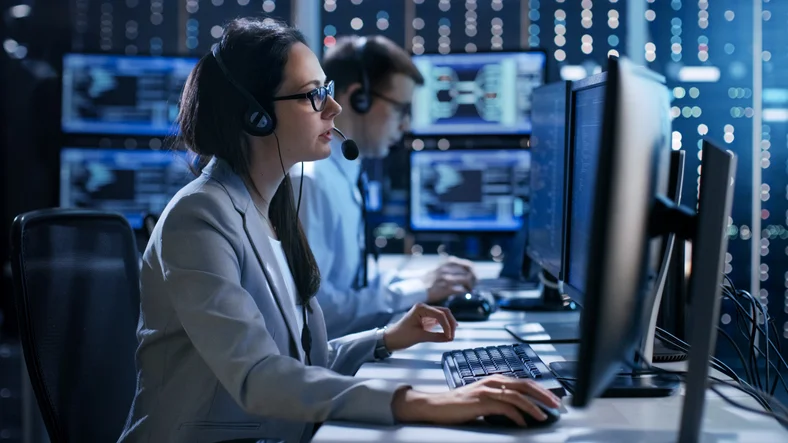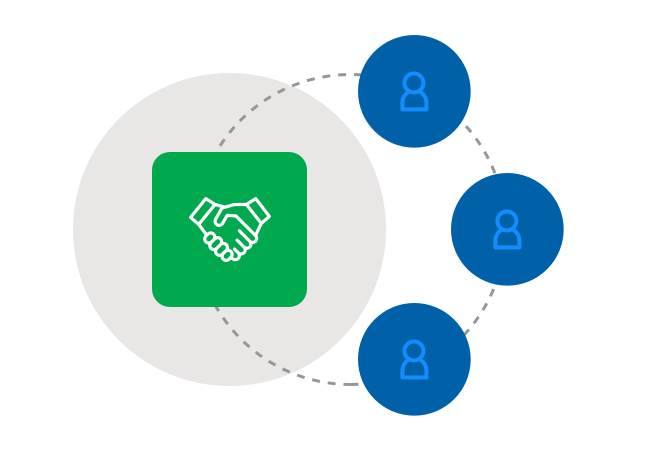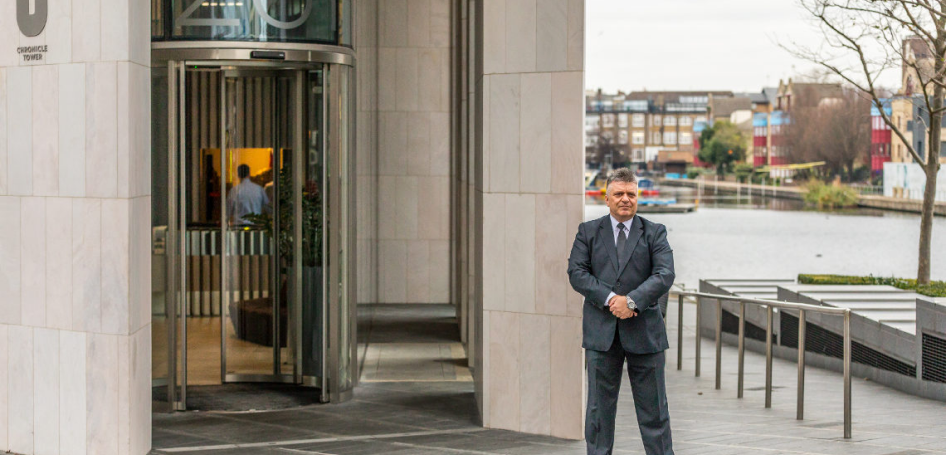Securing Success: A Deep Study Corporate Security Strategies
Securing Success: A Deep Study Corporate Security Strategies
Blog Article
From Cybersecurity to Physical Steps: Strengthening Business Security in an Altering World
By incorporating the toughness of both cybersecurity and physical security, companies can create a thorough protection strategy that addresses the varied variety of risks they deal with. In this conversation, we will discover the transforming hazard landscape, the demand to integrate cybersecurity and physical safety and security, the execution of multi-factor verification actions, the importance of employee understanding and training, and the adjustment of protection steps for remote workforces. By taking a look at these essential areas, we will gain useful insights into just how companies can reinforce their company safety and security in an ever-changing world.
Recognizing the Transforming Hazard Landscape
The developing nature of the modern globe requires a thorough understanding of the changing threat landscape for effective corporate safety. In today's interconnected and digital age, hazards to company safety have actually ended up being more intricate and sophisticated. As innovation developments and services become significantly reliant on electronic infrastructure, the capacity for cyberattacks, information violations, and various other protection violations has actually considerably increased. It is crucial for organizations to remain informed and adapt their protection gauges to address these advancing dangers.
One secret facet of understanding the altering danger landscape is acknowledging the different types of risks that companies face. Cybercriminals are regularly establishing brand-new techniques to manipulate susceptabilities in computer systems and networks. These threats can range from malware and ransomware attacks to phishing rip-offs and social design methods. Furthermore, physical threats such as burglary, criminal damage, and business reconnaissance continue to be common issues for services.
Surveillance and analyzing the danger landscape is important in order to determine prospective risks and vulnerabilities. This entails remaining upgraded on the most recent cybersecurity fads, analyzing threat intelligence reports, and performing routine threat evaluations. By recognizing the changing hazard landscape, companies can proactively implement ideal safety and security procedures to minimize dangers and secure their assets, online reputation, and stakeholders.
Integrating Cybersecurity and Physical Security
Integrating cybersecurity and physical protection is vital for detailed company defense in today's electronic and interconnected landscape. As companies significantly count on innovation and interconnected systems, the boundaries in between physical and cyber hazards are becoming blurred. To properly safeguard versus these risks, a holistic approach that integrates both cybersecurity and physical safety and security actions is vital.
Cybersecurity concentrates on protecting digital properties, such as information, systems, and networks, from unapproved accessibility, interruption, and burglary. Physical safety, on the other hand, incorporates measures to secure physical properties, people, and facilities from vulnerabilities and risks. By incorporating these two domains, organizations can attend to susceptabilities and hazards from both electronic and physical angles, consequently boosting their total safety posture.
The integration of these two disciplines permits a much more comprehensive understanding of security dangers and enables a unified reaction to events. Physical accessibility controls can be improved by incorporating them with cybersecurity protocols, such as two-factor verification or biometric recognition. Cybersecurity steps can be enhanced by physical safety measures, such as monitoring cams, alarm systems, and safe and secure accessibility factors.

Carrying Out Multi-Factor Verification Procedures
As companies increasingly focus on extensive safety steps, one reliable technique is the application of multi-factor authentication procedures. Multi-factor verification (MFA) is a safety and security technique that calls for users to give numerous types of recognition to access a system or application. This method includes an extra layer of protection by incorporating something the individual recognizes, such read what he said as a password, with something they have, like a fingerprint or a safety and security token.
By executing MFA, companies can dramatically improve their protection stance - corporate security. Typical password-based verification has its constraints, as passwords can be easily compromised or forgotten. MFA reduces these dangers by including an added verification aspect, making it harder for unapproved people to get accessibility to delicate information
There are several kinds of multi-factor verification methods available, consisting of biometric authentication, SMS-based confirmation codes, and hardware symbols. Organizations need to evaluate their specific needs and select one of the most ideal MFA solution for their needs.
However, the implementation of MFA need to be carefully intended and performed. It is vital to strike a balance between safety and usability to protect against customer aggravation and resistance. Organizations ought to also take into consideration possible compatibility concerns and give appropriate training and assistance to make sure a smooth change.
Enhancing Worker Awareness and Training
To enhance business security, companies should prioritize improving staff member recognition and training. Lots of safety and security breaches take place due to human mistake or lack of awareness.
Efficient worker awareness and training programs must cover a wide array of topics, including data security, phishing strikes, social engineering, password health, and physical safety and security steps. These programs should be customized to the specific requirements and duties of different worker functions within the company. Normal training simulations, sessions, and workshops can assist employees develop the necessary abilities and understanding to respond and recognize to safety threats properly.
In addition, companies ought to encourage a society of safety awareness and offer ongoing updates and suggestions to maintain staff members informed regarding the most up to date threats and mitigation strategies. This can be done via internal communication channels, such as e-newsletters, intranet sites, and email campaigns. By promoting a security-conscious workforce, companies can considerably minimize the probability of safety and security incidents and protect their valuable assets from unauthorized gain access to or compromise.

Adapting Safety And Security Measures for Remote Workforce
Adapting corporate protection steps to fit a remote workforce is necessary in guaranteeing the defense of delicate details and properties (corporate security). With the increasing fad of remote job, organizations should execute proper safety and security procedures to mitigate the risks related to this new method of working
One critical element of adjusting safety and security actions for remote read here work is developing secure interaction networks. Encrypted messaging systems and virtual private networks (VPNs) can help protect sensitive information and avoid unauthorized access. In addition, companies must apply making use of strong passwords and multi-factor verification to boost the safety of remote gain access to.
An additional essential factor to consider is the implementation of secure remote accessibility remedies. This entails giving staff members with secure accessibility This Site to corporate resources and information via digital desktop computer framework (VDI), remote desktop computer procedures (RDP), or cloud-based options. These modern technologies make sure that sensitive details remains secured while enabling employees to execute their roles properly.

Finally, comprehensive safety and security recognition training is vital for remote staff members. Educating sessions ought to cover ideal practices for firmly accessing and handling delicate info, recognizing and reporting phishing efforts, and preserving the total cybersecurity hygiene.
Conclusion
Finally, as the risk landscape remains to evolve, it is critical for organizations to strengthen their protection gauges both in the cyber and physical domains. Incorporating cybersecurity and physical security, applying multi-factor verification steps, and improving staff member awareness and training are necessary steps in the direction of accomplishing durable corporate safety. Furthermore, adapting safety and security measures to accommodate remote workforces is necessary in today's transforming world. By applying these measures, organizations can mitigate risks and safeguard their useful possessions from potential threats.
In this discussion, we will certainly check out the transforming threat landscape, the demand to incorporate cybersecurity and physical safety and security, the application of multi-factor verification measures, the value of employee awareness and training, and the adaptation of safety actions for remote workforces. Cybersecurity steps can be complemented by physical safety and security procedures, such as surveillance electronic cameras, alarms, and safe and secure access points.
As companies increasingly focus on comprehensive safety and security actions, one efficient technique is the execution of multi-factor verification procedures.In verdict, as the danger landscape proceeds to develop, it is important for organizations to strengthen their security gauges both in the cyber and physical domains. Incorporating cybersecurity and physical safety and security, carrying out multi-factor verification actions, and enhancing employee awareness and training are important actions in the direction of attaining robust company safety and security.
Report this page